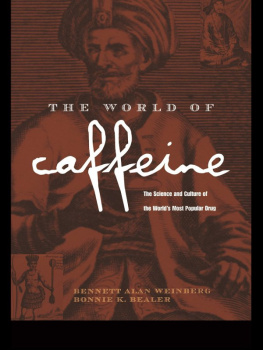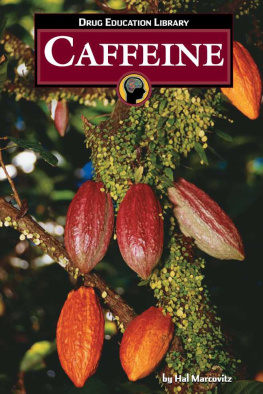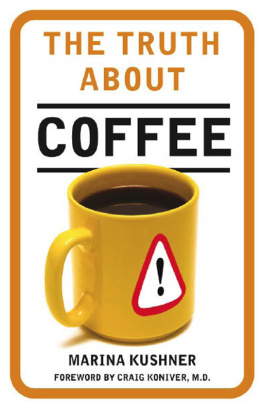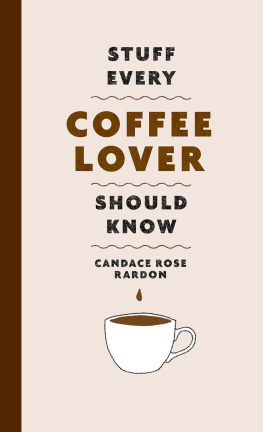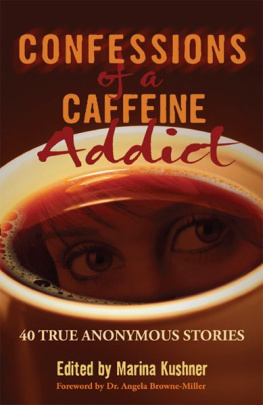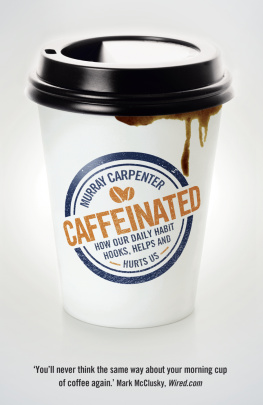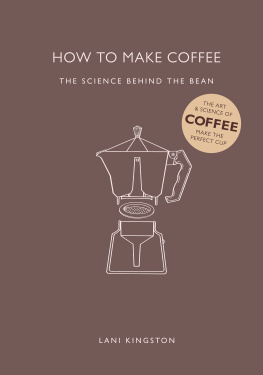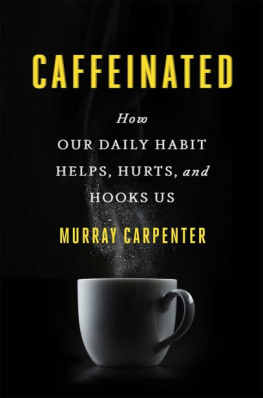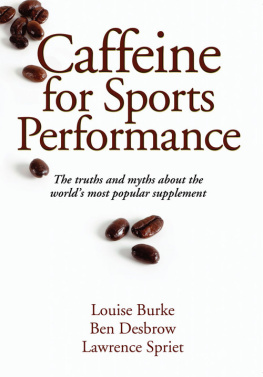An amazing booka challenging mix of history, science, medicine, anthropology, sociology, and popular music, then add a dash of humor, a pinch of polemic, and a dollop of healthful skepticism. Briskly written, full-bodied, and flavorful.
Kirkus Reviews
With chapters devoted to the history, science, and cultural significance of coffee, tea, and caffeinated soft drinks, TheWorld of Caffeine reveals a great deal of surprising information about the chemical that we all take for granted.
Wired Magazine
This book holds everything we ever wanted to knowabout the drug that helps many of us keep up with the fast pace of our lives.
Boston Herald, Editors Choice
Here at last is a lavishly produced history of the worlds favourite mood enhancer, from Mayan chocolate to the Japanese tea ceremony.
London Guardian
With impressive felicity, Weinberg and Bealer marshal the forces of history, chemistry, medicine, cultural anthropology, psychology, philosophy and even a little religion to tell caffeines complicated story. Fascinating, generously illustrated volume.
Cleveland Plain Dealer
The scholarship is impressive. The text is rich with information, yet is easy and pleasant to read.
Dr. Peter B.Dews in the New England Journal of Medicine
Caffeine shows no signs of surrendering its sovereign position in the hierarchy of humanitys drugs of choice and I know of no other book that better explains how and why it got there.
New Scientist
Well-researched and entertainingcontains a wealth of fascinating cultural anecdotes, historical information, and scientific facts which provide a unique perspective on the worlds most commonly used mood-altering drug.
Dr. Roland R.Griffiths, Johns Hopkins University School of Medicine
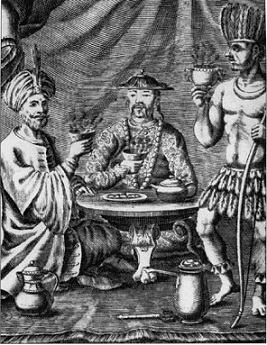
Frontispiece from Dufours Traitez Nouveux & curieux Du Caf, Du Th, et Du Chocolate. This French engraving, frontispiece for Dufours famous 1685 work on coffee, tea, and chocolate, depicts a fanciful gathering of a Turk, a Chinese, and an Aztec inside a tent, each raising a bowl or goblet filled with the steaming caffeinated beverage native to his homeland. On the floor to the left is the ibrik, or Turkish coffeepot, on the table at center the Chinese tea pot, and on the floor to the right the long-handled South American chocolate pot, together with the molin, or stirring rod, used to beat up the coveted froth. Baker, writing in 1891, commented that this image demonstrates how intimate the association of these beverages was regarded to be even two centuries ago. It is evident from the conjunction of subjects in the engraving that, long before anyone knew of the existence of caffeine, Europeans suspected that some unidentified factor united the exotic coffee, tea, and cacao plants, despite their dissimilar features and diverse provenances. (The Library Company of Philadelphia)
THE WORLD OF caffeine
The Science and Culture of the Worlds Most Popular Drug
BENNETT ALAN WEINBERG
BONNIE K.BEALER
ROUTLEDGE
New York and London
Published in 2002 by
Routledge
29 West 35th Street
New York, NY 10001
Published in Great Britain by
Routledge
11 New Fetter Lane
London EC4P 4EE
Routledge is an imprint of the Taylor & Francis Group.
This edition published in the Taylor & Francis e-Library, 2005.
To purchase your own copy of this or any of Taylor & Francis or Routledges
collection of thousands of eBooks please go to www.eBookstore.tandf.co.uk.
Copyright 2001 by Bennett Alan Weinberg and Bonnie K.Bealer
Design and typography: Jack Donner
All rights reserved. No part of this book may be reprinted or reproduced or utilized in any form or by any electronic, mechanical, or other means, now known or hereafter invented, including photocopying and recording or in any information storage or retrieval system, without permission in writing from the publishers. Any omissions or oversights in the acknowledgments section of this volume are purely unintentional.
Library of Congress Cataloging-in-Publication Data
Weinberg, Bennett Alan.
The world of caffeine: the science and culture of the worlds most popular drug/
Bennett Alan Weinberg and Bonnie K.Bealer.
p. cm.
Includes bibliographical references and index.
ISBN 0-415-92722-6 (hbk.)0-415-92723-4 (pbk.)
1. Caffeine. I. Bealer, Bonnie K. II. Title.
QP801.C24 W45 2001
613.84dc21 00059243
ISBN 0-203-01179-1 Master e-book ISBN
eISBN: 978-1-13595-817-6
Bennett Alan Weinberg
dedicates his efforts on this book to his parents,
Herbert Weinberg, M.D., and Martha Ring Weinberg,
who made so much possible for him.
Bonnie K.Bealer
dedicates her efforts to Ms. P.H.,
who knows who she is.
Argument
Health and history seen
Through the crystal caffeine
acknowledgments
The authors acknowledge with thanks the research assistance of the staff of the Library Company of Philadelphia; the staffs of the Free Library of Philadelphia and the New York Public Library; the staff of the Philadelphia Museum of Art, Rights and Reproductions Department; Lynn Farington and John Pollack, librarians of the University of Pennsylvania Rare Book Collections; Charles Kline, director of the University of Pennsylvania Photo Archives; Charles Griefenstein, Historical Reference Librarian at Philadelphias College of Physicians; Ted Lingle, then director of the Specialty Coffee Association of America; and Paul Barrow, photographer at the Bio-medical Imaging Center of the University of Pennsylvania School of Medicine.
We also thank Thomas Meinl of Julius Meinl, A.G., for generously supplying photographs, posters, and especially for providing us a transparency of and permission to reproduce the painting Kolschitzkys Caf, which hangs in the boardroom of Julius Meinl, A.G.
Three books deserve special mention as rich sources for our text: Coffee and Coffee-houses, by Richard Hattox; above all, All about Coffee and All about Tea, by William H. Ukers, merchant and scholar, whose masterworks have been drawn upon extensively for information and illustrations by nearly every book on coffee and tea written in the seventy years since their publication.
Our warmest thanks extend to Professor Roland R.Grifftths, Professor of Behavioral Biology and Neuroscience, Johns Hopkins University School of Medicine, who encouraged our work from the beginning, advised us throughout its early development, and performed a professional and meticulous review of the medical and scientific portions of our manuscript in its early stage for which we are very grateful.
And, of course, we thank our editor, Paula Manzanero, who saw merit in our book and applied her talents and experience to win acceptance for it at Routledge and who, together with our copy editor, Norma McLemore, and our proofreader, Roland Ottewell, contributed the insight and diligence that turned our sometimes rough manuscript into a finished text of which we are proud. For our cover, which is itself a work of art, we thank Jonathan Herder, art director for Routledge. For the book design and typography, we thank Jack Donner. And for putting the many pieces together and graciously accommodating our last-minute emendations, we thank Liana Fredley.

